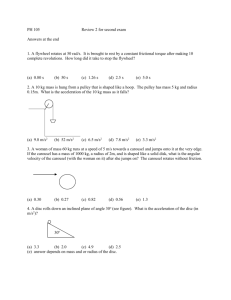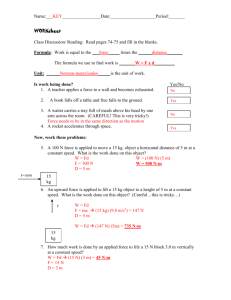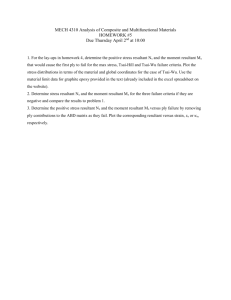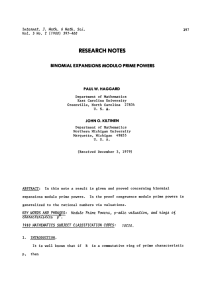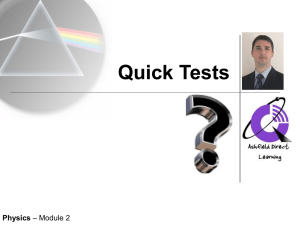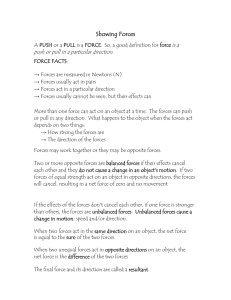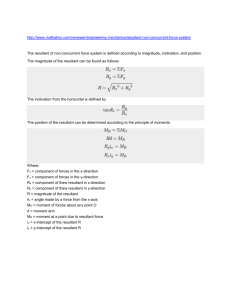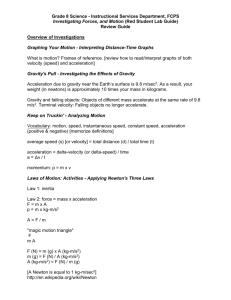TEST #3-Solution March 26
advertisement
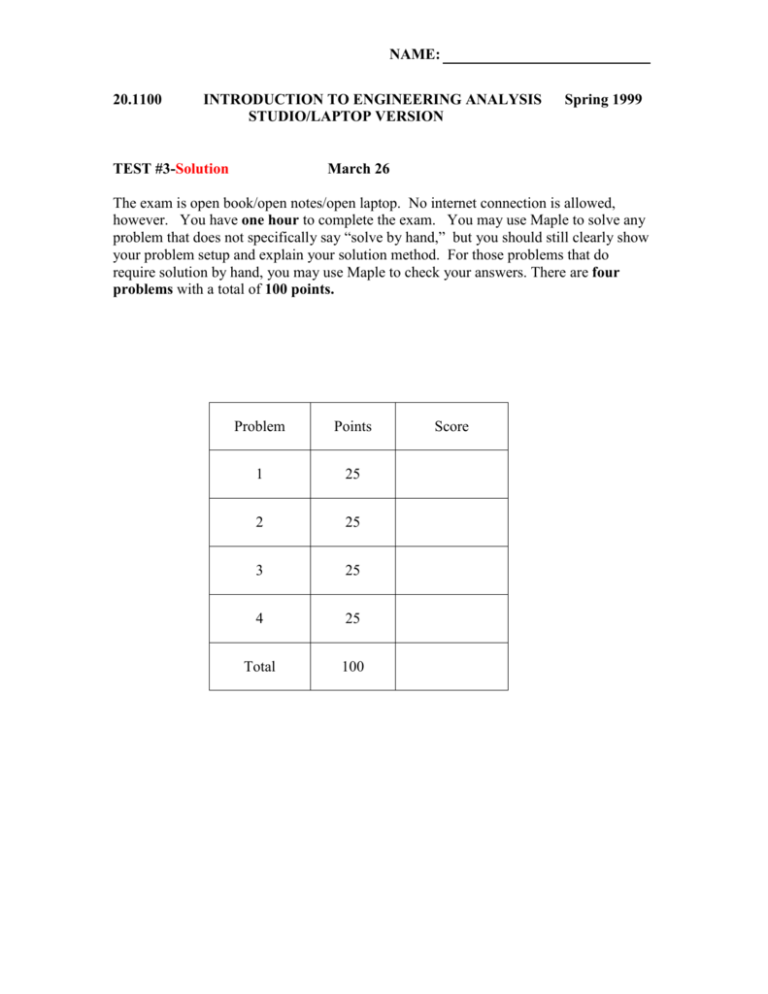
NAME:
20.1100
INTRODUCTION TO ENGINEERING ANALYSIS
STUDIO/LAPTOP VERSION
TEST #3-Solution
Spring 1999
March 26
The exam is open book/open notes/open laptop. No internet connection is allowed,
however. You have one hour to complete the exam. You may use Maple to solve any
problem that does not specifically say “solve by hand,” but you should still clearly show
your problem setup and explain your solution method. For those problems that do
require solution by hand, you may use Maple to check your answers. There are four
problems with a total of 100 points.
Problem
Points
1
25
2
25
3
25
4
25
Total
100
Score
NAME:
1. Consider a two-link planar robot as shown below. Suppose the motor in joint 1 is
rated at 2 N-m maximum torque and the motor in joint 2 is rated at 1 N-m maximum
torque, what is the maximum load (in terms of Kg mass) that the robot can carry in
the configuration shown? (25%)
Joint 2
Load
1m
Joint 1
1m
45o
0.5m
Solution:
Propagate the force to each of the two joints... when you do this, you create a moment
about each joint:
At joint 2 R = F = -Pj N (where R is the resultant force, and P is the magnitude of
the unknown load)
M = Fde = (P)(1m)(-k) The moment’s direction is found using the RHR.
At joint 1 R = F = -Pj N (where R is the resultant force, and P is the magnitude of
the unknown load)
M = Fde = (P)(1m + 1cos45m)(-k)
The moment’s direction is found using the RHR.
At joint 1, the maximum moment that can be supported is 2N-m. For a stable joint:
(2N-m) (P)(1m + 1cos45m)
(2N-m) (P)(1.707m)
(1.172N) P
At joint 2, the maximum moment that can be supported is 1N-m. For a stable joint:
(1N-m) (P)(1m)
(1N) P
So the maximum load the will result in a stable moment at each joint is 1N.
The answer wants a mass (kg):
F = ma
1N = m (9.81m/s2)
m = 0.102 kg
NAME:
2. Consider the system in equilibrium shown below. The beam has a uniform cross
section and weighs 100lb. Determine the force exerted by the cable at point B and
the reaction at the support A. Include appropriate free body diagram(s) in your
solution. (25%)
y
D
C
60o
200lb
B
100lb
A
2ft
2ft
Solution:
y
T
200 lb
60
AX
30
2 ft
2 ft
x
100 lb
AY
For equilibrium:
FX = AX – Tcos60 + 200 lb = 0
FY = AY – 100lb + Tsin60 = 0
MA = -(200)(4tan30)ft-lb - (100)(2)ft-lb + (Tsin60)(2)ft-lb +
(Tcos60)(2tan30)ft-lb = 0
Solving these three equations simultaneously gives:
x
NAME:
AX = -56.695 lb
AY = -148.21 lb
T = 286.61 lb
NAME:
3. Find the equivalent force and moment at hinge C for the rigid body system shown
below. Express your answer in Cartesian vector form. (25%)
z
B
1m
1m
C
y
600mm
1m
A
x
2m
50N
Solution:
When we move the force to point C, the force doesn’t change:
F = 50N (-1i – 1j + 1k)/{(-1)2+(-1)2+(1)2}1/2
F = (-28.87i – 28.87j + 28.87k) N
However, when we move the force, we create a moment which id found using rxF:
r = {(1-.6)i + 2j}m = (0.4i + 2j)m
(a vector from C to A)
M = rxF = (0.4i + 2j)x(-28.87i – 28.87j + 28.87k) N-m
M = (57.74)i – (11.55)j + (-11.55 + 57.74)k N-m
So the equivalent system at hinge C is:
F = (-28.87i – 28.87j + 28.87k) N
M = (57.74i – 11.55j + 46.19k) N-m
NAME:
4. Determine the resultant of the parallel force system shown below and locate the
intersection of the line of action of the resultant with the xy-plane. (25%)
z
1m
20N
5N
1m
y
x
2m
10N
Solution:
First, find the equivalent system at the origin.
When we move the forces to the origin, the resultant force is just the sum of all of the
forces:
R = F = (-20 – 5 – 10) k N
R = (-35k) N
However, when we move the forces, we create a moment which is found using rxF. To
find the total moment, find the sum of all of the individual moments about the origin:
M = (rxF) = (j)x(-20k) + (2j)x(-5k) + (i + 2j)x(-10k) N-m
M = (-20i – 10i – 20i + 10j) N-m
M = (-50i + 10j) N-m
So the equivalent system at the origin is:
R = (-35k) N
M = (-50i + 10j) N-m
Now we want to move this resultant force to a new point in the x-y plane, to create an
equivalent moment.
In other words,
M = rxR
NAME:
To calculate this r vector, use the formula:
r = RxM/R2
r = {(-35k)x(-50i + 10j)}/(35)2
r = {1750j + 350i)}/1225
r = {0.29i + 1.43j}m
So the resultant vector is R = (-35k) N
and its line of action in the x-y plane is defined by
r = {0.29i + 1.43j}m
